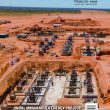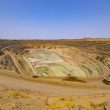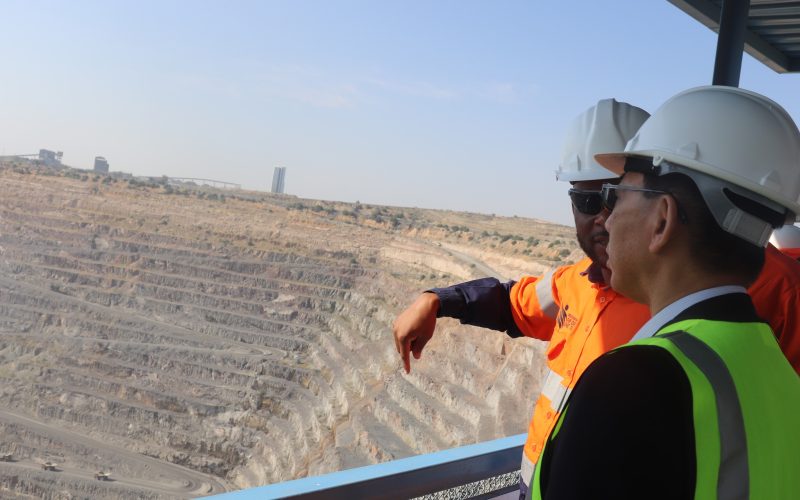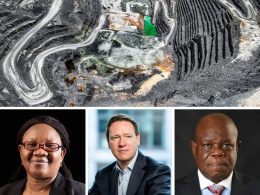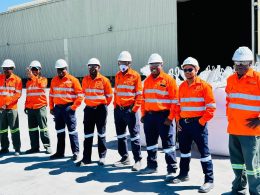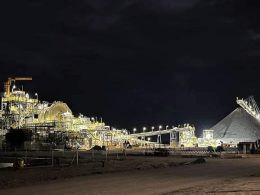Botswana— a world leader in diamond production by value has reclaimed its spot as Africa’s mining darling, toppling Morocco to return back on top as Africa most investment attractive jurisdiction in mining.
A Policy Perception Index (PPI) for 2022, released by the Fraser Institute has placed Botswana 1st in Africa and 2nd in the whole world out of 62 jurisdictions that responded to the survey.
Botswana’s increase in its PPI score (23 points) reflects decreased concerns over uncertainty concerning protected areas (-53 points), infrastructure (-40 points), political stability (-29 points), and labour regulations and employment agreements (-29 points).
Botswana is also the most attractive jurisdiction in Africa and top 10 in the world when considering both policy and mineral potential, ranking 10th out of 62 in overall investment attractiveness.
Policy Perception Index: A “report card” to governments on the attractiveness of their mining policies While geologic and economic considerations are important factors in mineral exploration, a region’s policy climate is also an important investment consideration.
The Policy Perception Index (PPI), is a composite index that measures the overall policy attractiveness of the 62 jurisdictions in the survey. The index is composed of survey responses to policy factors that affect investment decisions.
Policy factors examined include uncertainty concerning the administration of current regulations, environmental regulations, regulatory duplication, the legal system and taxation regime, uncertainty concerning protected areas and disputed land claims, infrastructure, socioeconomic and community development conditions, trade barriers, political stability, labour regulations, quality of the geological database, security, and labour and skills availability.
The top Nevada ranked first this year with the highest PPI score of 100, moving it up from sixth place in the previous version of the report. Botswana took the second spot held by Morocco (which dropped out of the top 10) in 2021.
Along with Nevada and Botswana, the top 10 ranked jurisdictions are South Australia, Utah, Newfoundland & Labrador, Alberta, Arizona, New Brunswick, Colorado, and Western Australia.
The United States is the region with the greatest number of jurisdictions (4) in the top 10 followed by Canada (3), Australia (2), and Africa (1).
The bottom The 10 least attractive jurisdictions for investment based on the PPI rankings (starting with the worst) are Zimbabwe, Guinea (Conakry), Mozambique, China, Angola, Papua New Guinea, the Democratic Republic of Congo (DRC), Nunavut, Mongolia, and South Africa. This year, six of the bottom 10 jurisdictions are in Africa, followed by Asia (2), Oceania (1), and Canada (1).
In terms of The Investment Attractiveness Index Botswana still finished in the top 10 globally and the only jurisdiction in Africa. The Investment Attractiveness Index takes both mineral and policy perception into consideration.
An overall Investment Attractiveness Index is constructed by combining the Best Practices Mineral Potential index, which rates regions based on their geologic attractiveness, and the Policy Perception Index, a composite index that measures the effects of government policy on attitudes toward exploration investment.
The Fraser Institute noted that while it is useful to measure the attractiveness of a jurisdiction based on policy factors such as onerous regulations, taxation levels, the quality of infrastructure, and the other policy related questions that respondents answered, the Policy Perception Index alone does not recognize the fact that investment decisions are often to a considerable extent based on the pure mineral potential of a jurisdiction, with respondents consistently indicating that approximately 40 percent of their investment decision is determined by policy factors.
The top jurisdiction in the world for investment based on the Investment Attractiveness Index is Nevada, which moved up from 3rd place in 2021.
Western Australia, which topped the ranking last year, ranked 2nd this year. Saskatchewan continues to be on the podium, dropping slightly from a rank of 2nd in 2021 to 3rd this year.
Rounding out the top 10 are Newfoundland & Labrador, Colorado, Northern Territory, Arizona, Quebec, South Australia, and Botswana. The United States, Canada and Australia each have three jurisdictions in this year’s top 10, followed by Africa (1).
When considering both policy and mineral potential in the Investment Attractiveness Index, Zimbabwe ranks as the least attractive jurisdiction in the world for investment followed by Mozambique, South Sudan, and Angola.
Also, in the bottom 10 (beginning with the least attractive for investment) are Zambia, South Africa, China, the Democratic Republic of Congo, Papua New Guinea, and Tanzania. Africa is the region with the most jurisdictions (8) in the bottom 10. Asia and Oceania both have one jurisdiction each in the bottom 10.
The Fraser Institute’s 2022 annual survey of mining and exploration companies assess how mineral endowments and public policy factors such as taxation and regulatory uncertainty affect exploration investment.
The survey was circulated electronically to approximately 1,966 individuals between August 23rd to December 30th, 2022. Survey responses have been tallied to rank provinces, states, and countries according to the extent that public policy factors encourage or discourage mining investment.
A total of 180 responses for the survey, providing sufficient data to evaluate 62 jurisdictions. By way of comparison, Fraser evaluated 84 jurisdictions in 2021, 77 in 2020, 76 in 2019, and 83 in 2018.
The number of jurisdictions that can be included in the study tends to wax and wane as the mining sector grows or shrinks due to commodity prices and sectoral factors. This year’s survey includes an analysis of permit times, as did last year’s survey.

